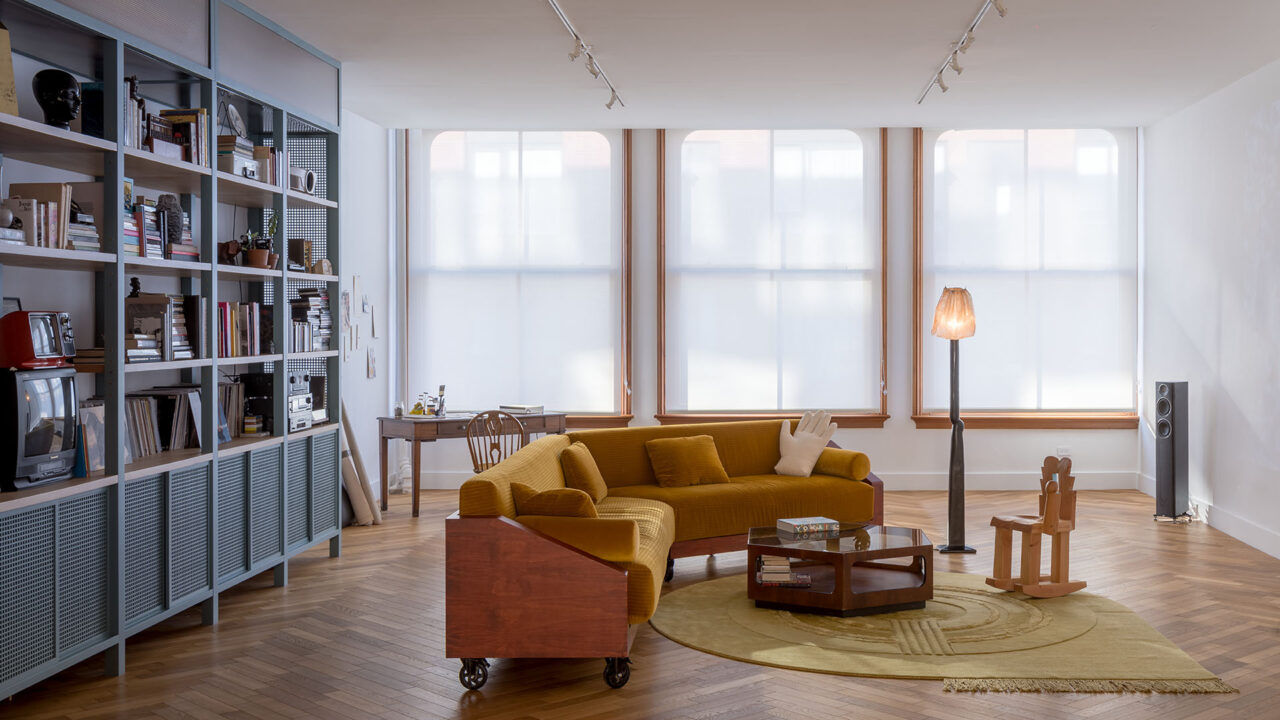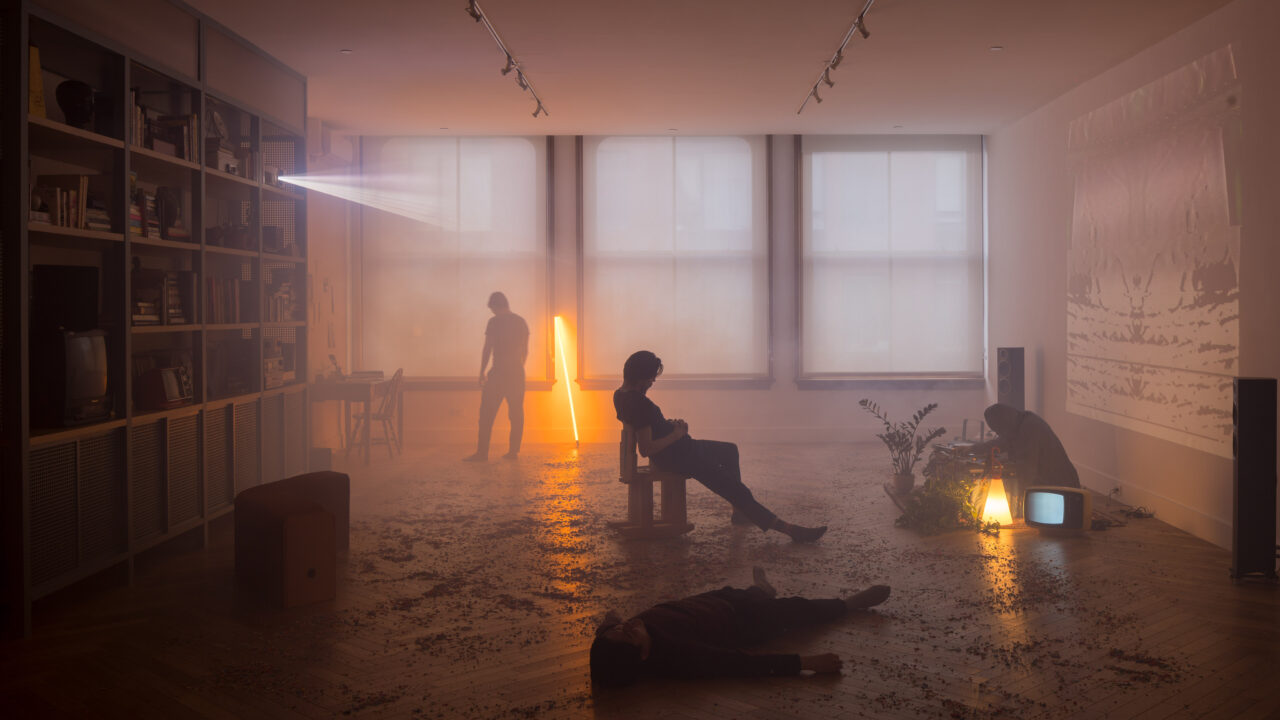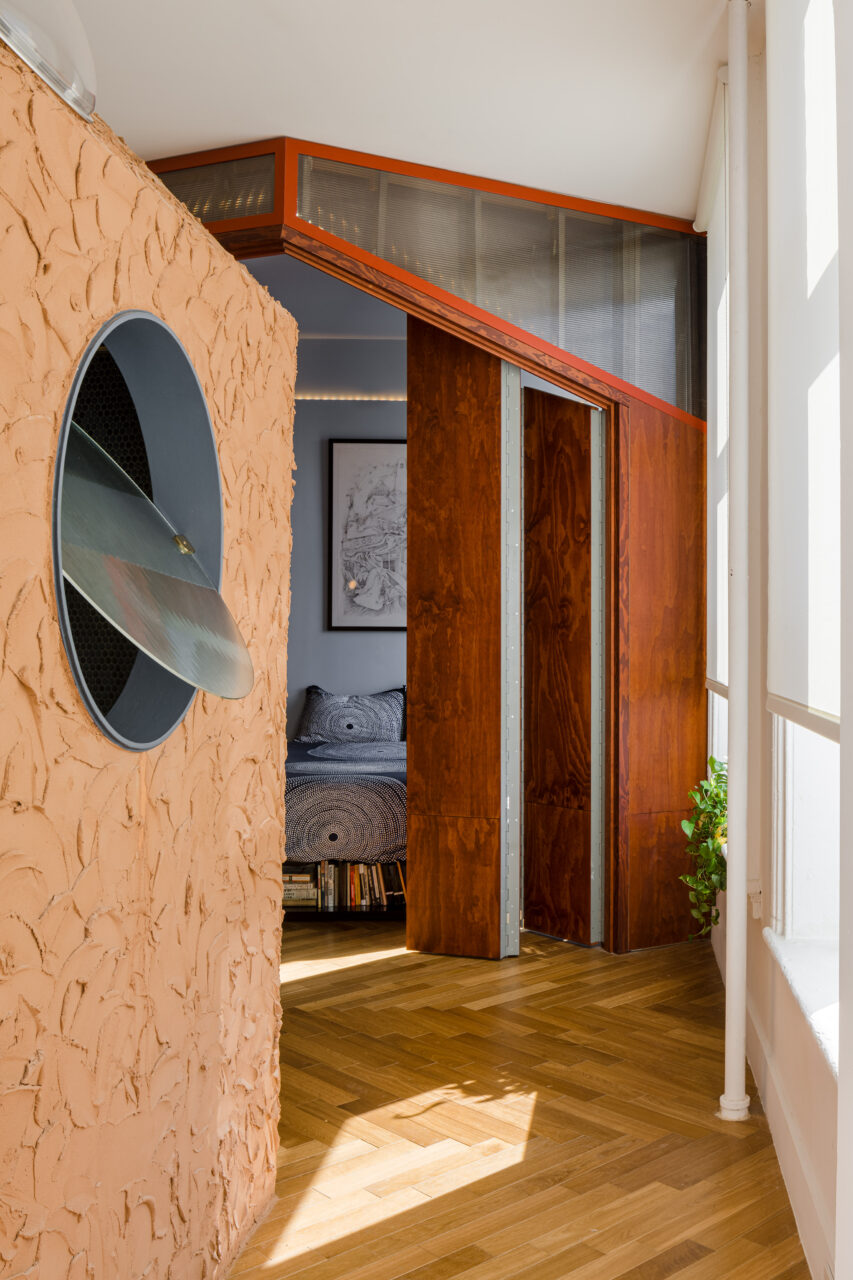A hat factory turned live–work space for an artist in Brooklyn’s Williamsburg neighborhood challenges notions of domesticity in its flipping of the quintessential New York City artist’s loft. “Live–work” isn’t an accurate descriptor; this project is more like a live–perform community gallery where the director just so happens to reside.
Designed by Ignacio G. Galán, Jesse McCormick, and Future Projects (Khoi Nguyen and Julie Tran), the apartment-meets-performance space occupies a 2,000-square-foot residence in one of the last remaining 19th-century cast- iron lofts in Brooklyn. The layout of the space is relatively straightforward, if highly calibrated. The residential rooms are all banked toward the loft’s entrance, leaving half the floor area open against a triptych of large, filleted windows, which allows it to transform from living room to gallery.

Is it an open-plan apartment for a client to throw occasional artistic parties? Or a performing arts space where the “artists in residence” happen to also live? In discussing the brief from the client, McCormick told AN Interior that “the legitimate program and desire of the client [is] to have performance and community space be fully integrated into the whole space.” Following the tradition of artist lofts that challenge norms of personal property, the client intends to lend the space out to other artists who, in their own right, become hosts to appropriate it as they see fit.
“It’s difficult to know how the space is going to operate, and I don’t think we want to control that,” Galán explained. “We were very interested in the tensions that the complex program elicits between the intimate and the public, what’s shown and what’s not. Rather than trying to resolve them in a clear-cut division, we decided to distribute a number of pockets of equipment throughout the space and explore and choreograph the tensions between them.”


The newly inserted elements display these tensions, suggesting a duality of interpretations. The enclosures for the bedroom, bathroom, and kitchen emerge from the loft’s walls as forms that encroach on an otherwise open floorplan. Yet in three dimensions, the carved forms and material for each room—red-stained pine plywood, rough clay plaster, colored MDF, and smoked polycarbonate—appear more like discrete objects, individual buildings along a streetscape, scaled down and stuffed inside an apartment.
These volumes containing the domestic components are minimized as much as possible, trimmed to allow light to permeate the space. “The luxury of the space that facilitates the ambitions of the project is the maintenance of the huge openness,” McCormick said. “There is just enough texture to what surrounds that open space to allow for these different scenes and pockets to be appropriated as they so desire.“
Nguyen, of Future Projects, describes the design for multiple configurations as “scenes.” He offered that the designers’ role was different than in normal projects: “We had to act like set designers, blocking different scenes and accommodating different scenarios. It was really interesting in terms of a typical role an architect would take versus how this project ended up.”
The result embraces the ambiguities of domesticity and hospitality and the architect as problem-solver, as opposed to designer as interrogator. Building from a rich New York City history of loft spaces as sites of performance, the stage is now set for the particular story of this project to begin.



